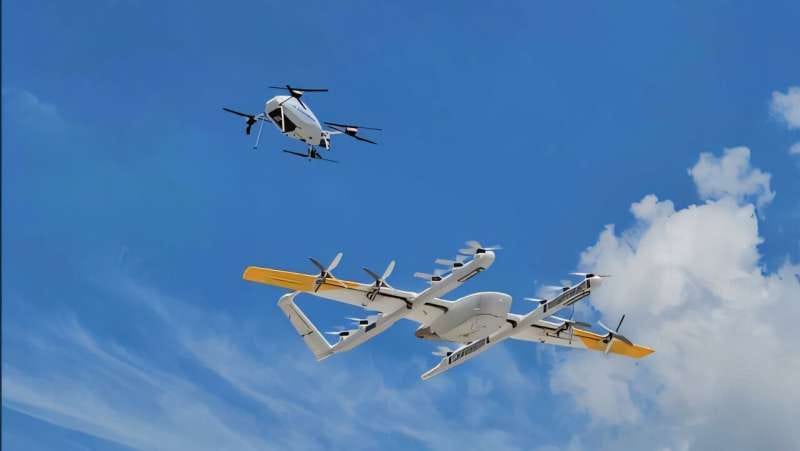🇺🇸 Happy 4th of July to everyone who’s celebrating today! — 5 stories you couldn’t possibly miss…
🤖 China to host first-ever multi-sport humanoid robot games in Beijing this August!
✧ Beijing will hold the inaugural 2025 World Humanoid Robot Sports Games from August 15–17 at the Bird’s Nest and Ice Ribbon venues. The event spans 19 competitions across 11 humanoid sports such as track & field, gymnastics, soccer, dance.
✧ Pushing robotics R&D by blending athletic performance with real‑world tasks amplifies motion, perception, and autonomy advancements, and public showcase aims to normalize intelligent machines in everyday roles, from service to sports involvement. The key point, though, is for China to show and solidify global leadership following a humanoid half‑marathon and autonomous robot soccer, this event cements Beijing’s status as a hub for robotics innovation.
✧ News-related queries in ChatGPT jumped 212% from January 2024 to May 2025, and referrals to publishers climbed from under 1 m to over 25 m—an impressive 25× surge . Yet, that spike pales next to the steep drop in organic search: web traffic to news sites plunged from over 2.3 bn visits in mid‑2024 to under 1.7 bn by May 2025. As AI-powered results—like Google’s AI Overviews—become default answers, click-through rates to publishers are tanking, with 69% of news searches now not leading to any click…
✧ Publishers are relying more on AI-driven traffic, but ChatGPT’s referrals merely soften the blow—organic decline still dwarfs AI gains, accelerating a pivot away from SEO-dependence. The shift signals a fundamental change in online commerce and advertising as users stay within AI chat interfaces, fewer ad impressions and fewer e-commerce visits via search links may shrink digital ad revenue. Newsrooms and digital businesses have to adapt to this new reality, explore AI partnerships, subscription models, micropayments, and other direct monetization strategies become essential in a post-search economy
⚛ Semiconductor extreme manufacturing process improved by Quantum machine learning!
✧ Australian researchers at CSIRO used quantum machine learning (QML) to model Ohmic contact resistance in GaN HEMTs device fabrication. Their Quantum Kernel-Aligned Regressor (QKAR) beat seven classical ML models using just 159 experimental samples. This marks the first demonstration of QML improving real-world semiconductor manufacturing processes.
✧ QML handles high-dimensional, small‑sample tasks better, opening doors to more precise, cost‑effective chip production. As quantum computing matures, integrating QML into manufacturing could streamline complex engineering workflows beyond semiconductors. Zooming out, though, with global investments in quantum trending upward, this breakthrough underscores the tech’s transition from lab to factory floor.
⚖️ Cloudflare starts blocking AI crawlers by default — stepping in where net neutrality once reigned.
✧ Cloudflare now defaults to blocking known AI scrapers on all new domains, shifting from an opt-out to an opt-in model. It introduces “Pay Per Crawl,” allowing publishers to charge AI firms for access, and deploys an “AI Labyrinth” to trap unauthorized bots. Major outlets like AP, The Atlantic, Stack Overflow, Reddit, Pinterest, Condé Nast, and Gannett support the move .
✧ Infrastructure providers are evolving into gatekeepers — deciding who gets to index content, akin to vertical net neutrality at the content level. This default blocking could stabilize digital ad and referral economies disrupted by AI chat interfaces bypassing original sources. But the core issue—fair access, compensation, and technical standards—might be better resolved through coordinated industry protocols or regulatory frameworks at the application (L7) layer, not left to unilateral control by CDNs…
🛸 U.S. launches first operational drone traffic management system to prevent mid‑air collisions.
✧ The Virginia Tech Mid‑Atlantic Aviation Partnership (MAAP), backed by NASA and the FAA, launched the first operational UAS Traffic Management (UTM) system in North Texas this March to enable real‑time flight data sharing among drone operators and deconflict routes. This industry‑governed framework, a decade in the making, includes operational and technical committees and is now available for any licensed entity to onboard and utilize. FAA has greenlit commercial operators like Wing, Zipline, DroneUp and ANRA under this system, moving from one‑off waivers to predictable rule‑based BVLOS (beyond visual line‑of‑sight) operations.
✧ As recreational and commercial drone density grows—near‑misses with manned aircraft reaching record highs—UTM is a crucial step for collision avoidance and public trust. More importantly this framework offers a blueprint for integrating drones and emerging air taxis into shared airspace, enabling growth while maintaining order and compliance. Crucially, Industry‑led governance supplemented by FAA oversight signals a tipping point—from ad‑hoc trials to formalized national regulations—setting a precedent for global drone air traffic management.
🔭 Other horizons and weekend long reads:
✧ Fireworks are precise chemical reactions packed into paper tubes—where oxidizers, fuels, binders, and metal salts work together to create color, sound, and spectacle. Each color depends on specific elements: strontium for red, barium for green, copper for blue—but getting pure blue remains a major scientific challenge. Timing and layering fuse science with artistry to choreograph bursts mid-air, from spark trails to thunderous finales..
✧ Fireworks are more than tradition—they’re chemistry in motion, blending physics, pyrotechnics, and materials science. Whether you're lighting a fuse or watching a show, understanding the science makes the sky bloom even brighter: Happy Fireworks Season!
🛰️ Satellite internet goes mainstream fueling a global (traffic jam) gold rush in space connectivity.
✧ A surge in satellite broadband, led by Starlink’s 5 million users and rivals like OneWeb, Amazon’s Kuiper and China’s Qianfanm, is reshaping LEO with thousands of satellites offering global coverage. Governments from the EU to China, India, Brazil and Malaysia are funding or negotiating national constellations—driven by concerns over reliance on Musk’s Starlink. Satellite internet now rivals traditional terrestrial ISPs—offering lower prices and access in underserved regions, like parts of Africa where Starlink beats local providers.
✧ With ~350 million people still offline, LEO constellations could finally deliver high-speed internet to rural and remote communities, closing the digital divide.
National and regional systems (EU’s IRIS², China’s Qianfan) reflect a strategic push to control critical digital backbones beyond private U.S. platforms, and on the business front as costs drop and coverage rises, terrestrial ISPs must innovate—or risk disruption from affordable, space‑based alternatives.









